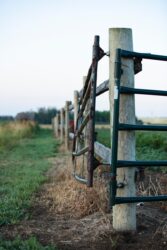Alberta’s diverse geological landscape is a treasure trove of rocks and minerals, each telling a unique story of the province’s vast geological history.
From the majestic Rocky Mountains to the ancient badlands, Alberta is home to a variety of rocks that not only shape its natural beauty but also contribute to its rich resource economy.
Exploring the Geological Diversity of Alberta
Alberta’s geological makeup is characterized by a variety of rock types, each with its own unique properties and origins.
The province’s geological wonders are not just a subject of academic interest but also a playground for enthusiasts and professionals alike.
Sedimentary Rocks
- Limestone and Dolomite: Predominantly found in the Rocky Mountains, these rocks are essential for Alberta’s cement industry and are also visible in the dramatic cliff faces of the mountains.
- Sandstone: This rock is commonly found in the Alberta badlands, notably around Drumheller and Dinosaur Provincial Park. Its layers tell tales of ancient rivers and floodplains.
- Shale: Abundant in Alberta, shale layers contain significant amounts of oil and gas, making them crucial for the province’s energy sector.
Igneous Rocks
While less common due to Alberta’s sedimentary-dominated landscape, igneous rocks can be found, particularly in the form of erratics—rocks transported by glacial activity from other regions. These include:
- Granite: Often found as glacial erratics, these rocks are scattered across Alberta’s plains, offering a glimpse into the geological processes at play during the last Ice Age.
Metamorphic Rocks
- Quartzite and Schist: These rocks are primarily found in the western part of Alberta, near the Rocky Mountains. They are formed under extreme pressure and heat, transforming from their original sedimentary and igneous states into harder, more crystalline forms.
The Role of Alberta’s Rocks in Its Natural and Cultural History
Alberta’s rocks are not just static features of the landscape; they are dynamic elements that have influenced the human and natural history of the region.
From providing resources for Indigenous peoples to driving the modern economy through oil, gas, and minerals, these rocks are integral to Alberta’s identity.
FAQs on Alberta’s Geological Riches
What is the most common rock in Alberta? Sedimentary rocks, particularly shale, sandstone, and limestone, are the most common, reflecting Alberta’s ancient marine and riverine environments.
Can diamonds be found in Alberta? While Alberta is not known for diamond mines, the province’s glacial history means that it’s possible, though rare, to find diamonds within glacial till deposits.
Are there any precious minerals in Alberta? Yes, Alberta is home to minerals like ammolite, a gemstone found in the Bearpaw Formation, making it one of the few places in the world where this iridescent fossil can be found.
In Summary
- Alberta’s geological landscape is dominated by sedimentary rocks, with significant occurrences of metamorphic and igneous rocks as glacial erratics.
- The province’s rocks tell the story of its ancient past, from marine environments to ice age phenomena.
- Alberta’s rocks are not only of academic interest but also play a crucial role in its economy and cultural heritage.
Sources
- Calgary Herald: Offers insights into Alberta’s geological wonders. Alberta Rocks: Five Geological Wonders
- University of Alberta: Provides detailed information on the minerals of Alberta. Minerals of Alberta
- APEGA: Explores the riverbanks of Alberta with a geoscientist, highlighting common rocks and minerals. Exploring the Riverbank with a Geoscientist
- AlbertaWOW: Showcases a collection of rocks and minerals found in Alberta. Alberta Rocks and Minerals




